Miss Universe is one of the most recognised and prestigious international beauty pageants of the world. Along with the Miss World and Miss Earth contests, Miss Universe is one of the three largest beauty pageants in the world in terms of the number of national-level competitions. It was founded in 1952 by the California clothing company Pacific Mills. The logo for Miss Universe “The Woman with Stars” was created in 1998, that representing the beauty and responsibility of women around the Universe. Miss Universe is part of the Big Four international beauty pageants. Let’s take a look at 10 Lesser Known Facts About Miss Universe.
10. Win at Home Country

Sponsored Links
So far, there have been seven winners who won the crown on their home country, out of which six wins are held by USA. They are Miriam Stevenson won Miss Universe 1954 (3rd Edition), Carol Morris won Miss Universe 1956 (5th Edition), Linda Bement won Miss Universe 1960 (9th Edition), Sylvia Hitchcock won Miss Universe 1967 (16th Edition), Brook Lee won Miss Universe 1997 (46th Edition) and Olivia Culpo won Miss Universe 2012 (61st Edition); all in USA representing USA. Whereas Puerto Rico’s Denise Quiñones won Miss Universe 2001 (50th Edition) in Puerto Rico.
9. Youngest & Oldest Miss Universe
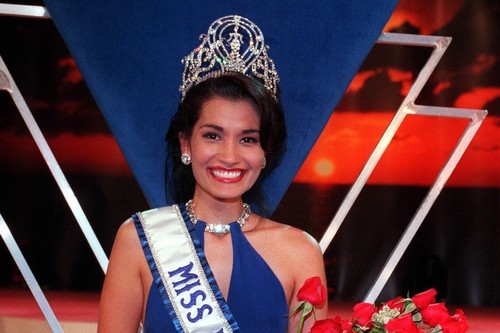
The oldest winner in the pageant’s history is USA’s Brooke Lee who won Miss Universe 1997 (46th Edition) at the age of 26 years and 128 days; while the youngest winner has been the very first winner of the pageant -Finland’s Armi Kuusela who won Miss Universe 1952 (1st Edition) at the age of 17 years and 303 days.
8. Tallest & Shortest Miss Universe
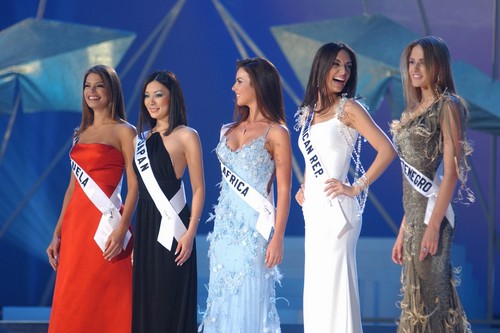
The Tallest winner in the pageant’s history has been Dominican Republic’s Amelia Vega, who won Miss Universe 2003. She measured a whopping 6’1”; whereas the record for being shortest winner is held by two winners – Columbia’s Luz Marina Zuluaga who won Miss Universe 1958 (7th Edition) and Thailand’s Apasra Hongsakula who won Miss Universe 1965 (14th Edition)- both measuring 5’4”.
7. Miss Universe to Be Crowned Next Year
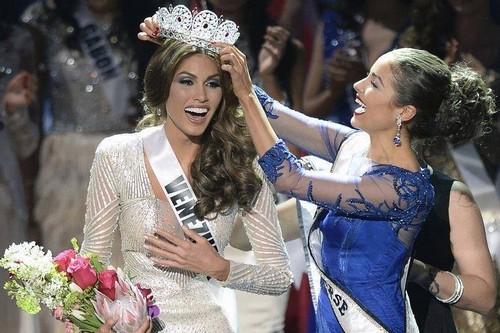
Miss Universe 2014 (63rd Edition) is the first edition which did not take place in its corresponding year. The event will take place on January 25, 2015 in USA. A total of 88 delegates are expected to participate in the event. Thus, 2014 became the first year to not witness a Miss Universe pageant since its inception. This decision of skipping a year has sparked outrage and controversy among pageant fans.
Sponsored Links
6. Most Sub-Titles Won Miss Universe
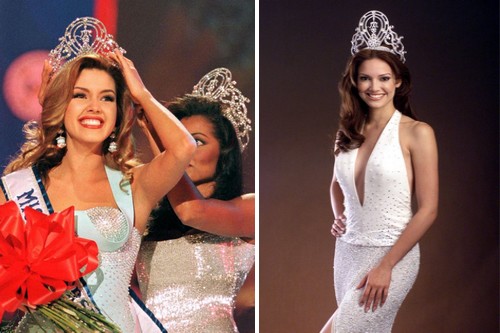
Throughout the history of the pageant, there have been several winners, who beside winning and bringing home the crown, have won several sub-title awards. Sweden’s Margareta Arvidsson who won Miss Universe 1966 (15th Edition), Philippines Maria Margarita Moran who won Miss Universe 1973 (22nd Edition), Trinidad& Tobago’s Janelle Commissiong who won Miss Universe 1977 (26th Edition) and Puerto Rico’s Denise Quiñones who won Miss Universe 2001 (50th Edition), also won Miss Photogenic Award. Whereas Thailand’s Porntip Nakhirunkanok who won Miss Universe 1988 (37th Edition), Trinidad & Tobago’s Wendy Fitzwilliam who won Miss Universe 1998 (47th Edition) and Dominican Republic’s Amelia Vega who won Miss Universe 2003 (52nd Edition). Philippine’s Gloria Diaz who won Miss Universe 1969 (48th Edition), USA’s Chelsi Smith who won Miss Universe 1995 (44th Edition), Venezuela’s Alicia Machado who won Miss Universe 1996 (35th Edition), India’s Lara Dutta who won Miss Universe 2000 (49th Edition), Puerto Rico’s Denise Quiñones who won Miss Universe 2001 (50th Edition) and Russia’s Oxana Fedorova who won Miss Universe 2002 (51st Edition), all won Best In SwimSuit Award. Venezuela’s Alicia Machado who won Miss Universe 1996 (35th Edition) and Puerto Rico’s Denise Quiñones who won Miss Universe 2001 (50th Edition) also won Best Style Award. USA’s Carol Ann Laverne Morris who won Miss Universe 1956 (5th Edition) also won Most Popular Girl In Parade Award.
5. Decade Winners Miss Universe
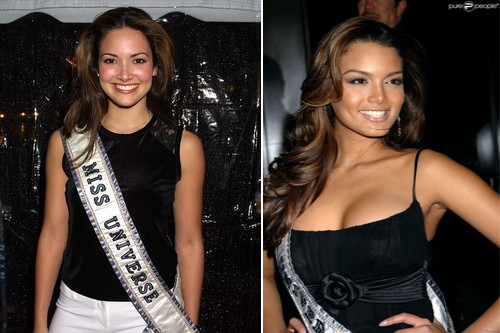
In the 1950s, USA won two crowns- USA’s Miriam Stevenson won Miss Universe 1954 (3rd Edition) and USA’s Carol Morris won Miss Universe 1956 (5th Edition). In the 1960s, two countries achieved double wins – USA and Brazil – USA’s Linda Bement won Miss Universe 1960 (9th Edition) and USA’s Sylvia Hitchcock won Miss Universe 1967 (16th Edition) whereas Brazil’s Iêda Maria Vargas won Miss Universe 1963 (12th Edition) and Brazil’s Martha Vasconcellos won Miss Universe 1968 (17th Edition). In the 1970s, no country achieved any such feat. In 1980s, Venezuela’s Irene Sáez won Miss Universe 1981 (30th Edition) and Venezuela’s Bárbara Palacios won Miss Universe 1986 (35th Edition). In the 1990s, USA for the third time achieved this feat – USA’s Chelsi Smith won Miss Universe 1995 (44th Edition) and USA’s Brook Lee won Miss Universe 1997 (46thth Edition). In the 2000s- there were two countries again who achieved this feat – Puerto Rico and Venezuela – Puerto Rico’s Denise Quiñones won Miss Universe 2001 (50th Edition) and Puerto Rico’s Zuleyka Rivera won Miss Universe 2006 (55th Edition) , and Venezuela’s c won Miss Universe 2008 (57th Edition) and Venezuela’s Stefanía Fernández won Miss Universe 2009 (58th Edition).
4. Consecutive Winners Miss Universe
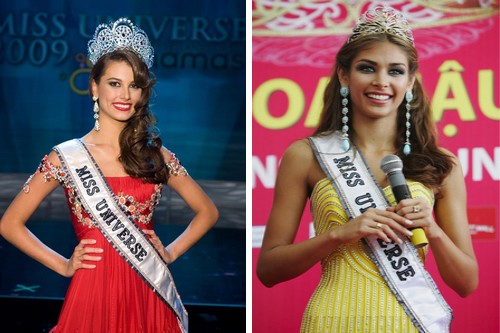
Venezuela created history in 2009 by becoming the first and so far the only country in the world to win Miss Universe crown consecutively back to back. Venezuela’s Dayana Mendoza won Miss Universe 2008 (57th Edition) and she crowned Venezuela’s Stefanía Fernández who won Miss Universe 2009 (58th Edition). >> 10 Most Beautiful Women in USA.
3. Most and Least Number of Delegates
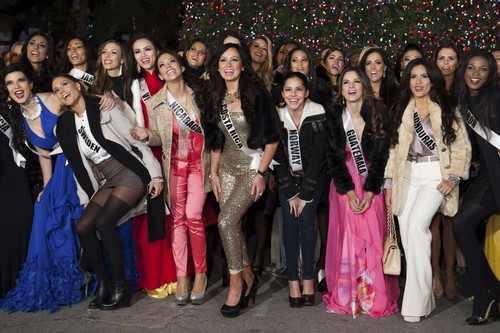
Miss Universe 2011(60th Edition) and Miss Universe 2012 (61st Edition) recorded the highest number of delegates- both witnessing 89 delegates from across the globe – Angola’s Leila Lopes won the crown in 2011 while USA’s Olivia Culpo won the crown in 2012. Miss Universe 1953 (2nd Edition) witnessed the least number of delegates participating with 26 nations. The winner that year was France’s Christiane Martel.
2. Longest Gap Between Winning

Japan holds the record for the longest gap between two wins. So far, Japan has won the crown twice. The first time happened when Akiko Kojima became Miss Universe 1959 (8th Edition). The next and second time happened after 48 years when Riyo Mori became Miss Universe 2007 (56th Edition). Now that’s what we call a wait….. >> Top 10 Most Attractive Chinese Women.
1. Facts About Miss Universe: Ranking
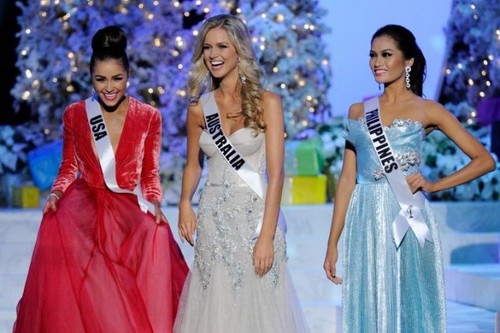
Sponsored Links
Country Wise, taking into account number of wins, USA is at number 1 with 8 wins (1954, 1956, 1960, 1967, 1980, 1995, 1997, 2012), followed by Venezuela with 7 wins (1979, 1981, 1986, 1996, 2008, 2009, 2013) and Puerto Rico at number 3 with 5 wins (1970, 1985, 1993, 2001, 2006).


